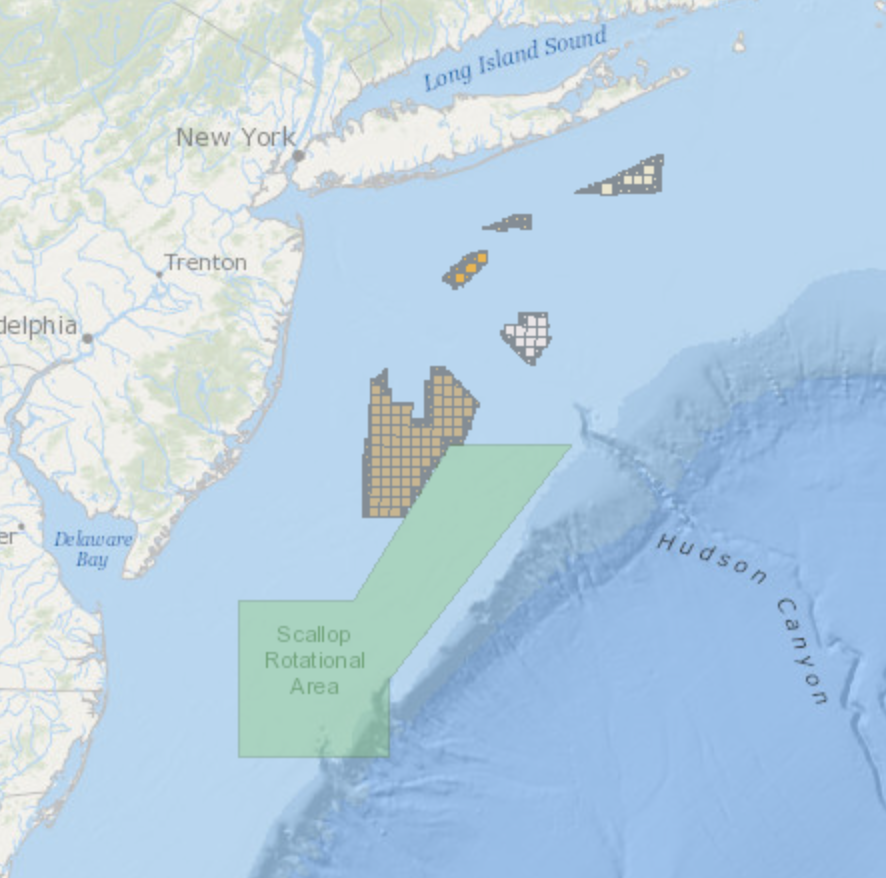The Bureau of Ocean Energy Management will offer eight new offshore wind lease areas in the New York Bight, potentially opening up to 627,000 acres for energy development between New Jersey and Long Island.
With a potential for more than 7 gigawatts of generation, the lease areas are touted by the Biden administration as a new economic engine for the region ¬– with and explicit promise by Interior Secretary Deb Haaland to put “a priority on creating and sustaining good-paying union jobs as we build a clean energy economy.”
Northeast state governors and lawmakers have pushed offshore wind development as a new industry that will benefit their political allies in organized labor, and that theme is front and center in the administration’s new “all-of-government” push.
The announcement Friday brought immediate pushback from commercial fishermen in the scallop industry, one of the nation’s richest and most successful fleets, urging BOEM to delay leasing and adjust the proposed areas to preserve important shellfish habitat.
The agency should “shift the boundaries of the Hudson South area just five miles, so BOEM can better ensure that critical scallop populations will be unaffected, while not diminishing the potential for wind power in the area,” according to the Fisheries Survival Fund, an advocacy group for the East Coast scallop industry. Leasing in the central New York Bight should “be deferred at this time, given the high importance of the area to scallops,” the group said.
It’s the latest in the Biden administration’s surge to hasten offshore wind planning, following announced plans for two wind energy areas off California and a new study to ascertain the wind energy industry’s interest in potentially developing the Gulf of Mexico. So far BOEM has held 8 competitive lease sales and issued 17 active commercial offshore wind leases on the Atlantic from Massachusetts to North Carolina.
For the New York Bight, a Proposed Sale Notice (PSN) in the Federal Register Friday opened a 60-day public comment period, and “provides detailed information about potential areas that could be available for leasing, proposed lease provisions and conditions, auction details” according to the agency.
BOEM is proposing new lease stipulations “that will reaffirm its commitment to create good-paying union jobs and engage with all stakeholders and ocean users. Some of these potential stipulations include:
• A requirement to make every reasonable effort to enter into a project labor agreement covering the construction of any project proposed for the lease area.
• A requirement to include a stakeholder and ocean user engagement summary as part of a lessee’s progress reporting requirements. This summary would describe existing ocean users in the New York Bight, engagement activities with those users during the reporting period, and a description of efforts to minimize any conflict between the existing users and the lessee. This provision is intended to strengthen current fisheries communication requirements and improve coordination between the lessee and fishing communities early in the planning of proposed wind facilities.
• Mechanisms to provide benefits to underserved communities and investments in a domestic supply chain, consistent with the goals and objectives of the Outer Continental Shelf Lands Act.”
Despite BOEM’s avowed intent to include coordination with the fishing industry, Fisheries Survival Fund said, “the government’s current proposed lease sales…fail to incorporate any of the recommendations made by FSF or the city of New Bedford, the nation’s most valuable fishing port.” The advocacy group has sought – mostly unsuccessfully, so far – to get federal courts to restrain BOEM’s offshore wind planning in the region.
Traversed by scallop vessels based from North Carolina to New England, the New York Bight has some of the most prolific beds of the fishery that in 2019 landed more than 60.6 million pounds worth $570 million according to the National Marine Fisheries Service.
“In the New York Call Areas alone, there were $268 million worth of scallops landed over a five year period, from 2012-2016. Atlantic sea scallops are, in fact, the nation’s most valuable federally managed fishery,” the group said.
Two of the BOEM designated Wind Energy Areas, called Hudson South and Central Bight, “are located in particularly sensitive areas for scallops,” according to the group. “In their current form, these areas, including hundreds of thousands of acres of ocean, will have a serious negative impact on the fishery.”
The proposed easternmost lease areas in Hudson South are adjacent to the Hudson Canyon Scallop Access Area, one of the most important scallop areas in the Northeast that from 2001-2018 yielded some 60 million pounds of scallops worth more than $600 million.
One recent scientific study credited successful management of scallops in the Hudson Canyon area by NMFS and the New England Fishery Management Council brought a seven-fold increase of scallops in the nearby Elephant Trunk Scallop Access Area – so called for its sinuous appearance on charts east of Cape May, N.J.
Maintaining that biomass has also kept scallops abundant off the Delmarva coast, according to the Fisheries Survival Fund.
“The Hudson Canyon SAA’s ecological and economic benefits explain why FSF has requested that BOEM operate under the well-recognized “precautionary principle” to create a buffer between wind farms in the Hudson South and this critical scallop area,” the group said.







